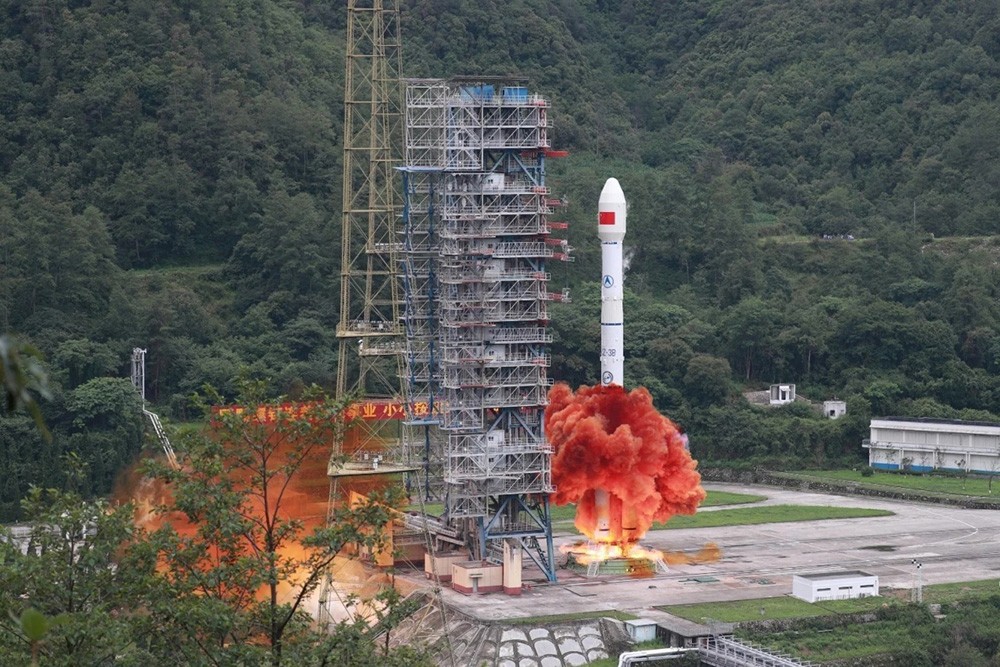Tel
13924628001
2024-01-22
2023-11-24
2023-01-06
2022-08-29
2022-06-28
2022-04-04
2020-06-23 15:35:00

Perfect ending, star shine all over the world!
At 9:43 am on June 23, China successfully launched the 55th Beidou-3 navigation satellite, and the last global network satellite of Beidou-3, from the Xichang Satellite Launch Center with a Long March-3B carrier rocket, which completed the deployment of the Beidou-3 global navigation satellite system constellation six months ahead of the original plan.
Beidou 3 ended the launch of twists and turns, jade Ruyu. Before, due to the failure of two space launch missions, the quality review was carried out across the project, and the launch time was adjusted from May to June. On June 16, due to the discovery of product technical problems before the launch, in order to ensure 100% success, without any hidden dangers, the launch was postponed again. The complete success of this mission fully reflects the space front's pragmatic scientific spirit and rigorous and detailed work style, and once again confirms that the "serious, thoughtful and meticulous, reliable and foolproof" scientific research and test sixteen word policy is an important magic weapon for China's space industry to continuously overcome difficulties and continue to win victory. After the successful launch, the United Nations Division for Outer Space Affairs sent a special video to congratulate the BDS on the completion of the global network deployment, affirm that the BDS is promoting global economic and social development, and commend the BDS for its great contribution in the peaceful use of outer space and participation in the international cooperation of the United Nations space activities.
The satellite launched this time belongs to the geostationary orbit satellite, after a series of in-orbit tests into the network, China will carry out the whole Beidou system connection test, on the basis of ensuring the stable and reliable operation of the system and excellent performance indicators, choose the opportunity to provide users with all-day, all-weather and high-precision global positioning navigation and timing services. And satellite based enhancement, short message communication, precision single point positioning and other special services.
In 1994, construction of the Beidou navigation Satellite System began. Over the past 20 years, China has organized 44 Beidou launch missions at the Xichang Satellite Launch Center, sending four Beidou-1 test satellites, 55 Beidou-2 and Beidou-3 network satellites into predetermined orbit using Long March-3A-series carrier rockets, with a success rate of 100 percent. In particular, since the opening of the global network in 2017, 18 high-density launch missions have been carried out in two and a half years. This year, in the special environment of the fight against the novel coronavirus pneumonia epidemic, the Beidou Project has adhered to the "two-front operation" of network launch and epidemic prevention and control, and effectively promoted the successful conclusion of the Beidou III global network. With the strong support of measurement and control, ground operation and control, inter-satellite link operation and management, application verification and other systems, all the previously launched satellites in orbit have been connected to the network.
From project demonstration to launch and implementation, from dual-star positioning to regional networking, and then to global coverage, the construction of China's satellite navigation system has gone through more than 30 years of exploration and practice, and Beidou people have continued to work hard and walked out of a road of self-reliance, independent innovation, and self-transcendence. China has built a huge complex space system with the largest scale, the most extensive coverage, high service performance, and the closest connection with people's lives, becoming the first major space infrastructure in China to provide public services to the world. It has made important contributions to the development of the world's satellite navigation industry, provided more choices for the global public to share better time-space precision services, and accumulated valuable experience for the modernization of the management of major science and technology projects in China.
At present, more than half of the countries in the world have begun to use the Beidou system. In the future, China Beidou will continue to participate in international satellite navigation affairs, promote the compatibility and sharing of multiple systems, carry out international exchanges and cooperation, promote the overseas application of Beidou according to the needs of the world's people, and share the latest development achievements of Beidou.
China Beidou serves the world and benefits mankind. Where human dreams go, they want to locate time and space; Wherever the human step has gone, it wants to be guided. By 2035, China will build and improve a comprehensive space-time system that is more ubiquitous, more integrated, and more intelligent, further improving the capacity of space-time information service, and making China's contribution to the deeper and farther journey of mankind.
The Beidou navigation satellite and its supporting carrier rocket were developed by the China Academy of Space Technology and the China Academy of Launch Vehicle Technology under the China Aerospace Science and Technology Corporation, respectively.